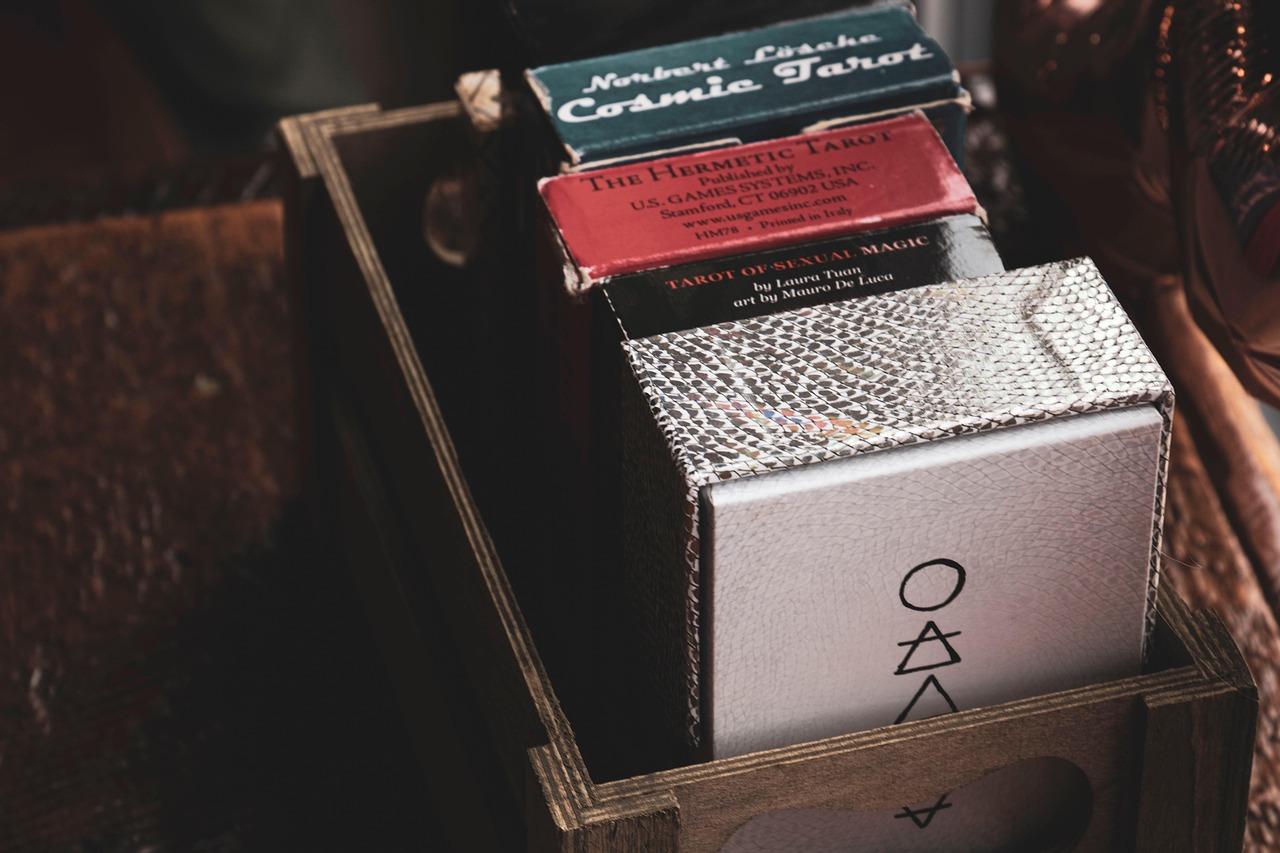
Unlocking the Secrets of Tarot: Your Beginner’s Guide to Becoming a Tarot Card Reader
Have you ever felt a strange pull towards the mystical world of tarot cards? Perhaps you’ve seen friends flipping through decks, or maybe you’ve been captivated by the stunning imagery on those colorful cards. If you’ve ever wondered what secrets they hold, you’re not alone! Tarot reading is more than just a quirky hobby; it’s a powerful tool for self-discovery, reflection, and even guidance in life’s complex journey.
But where do you start? With so many decks, techniques, and interpretations out there, diving into the world of tarot can seem overwhelming. That’s why we’ve crafted this simple, step-by-step guide to help you become a confident tarot card reader in no time. Whether you’re seeking to read for yourself, friends, or even clients, this guide will walk you through the essential steps to unlock your intuitive potential. So, grab your favorite deck, and let’s embark on this exciting journey together!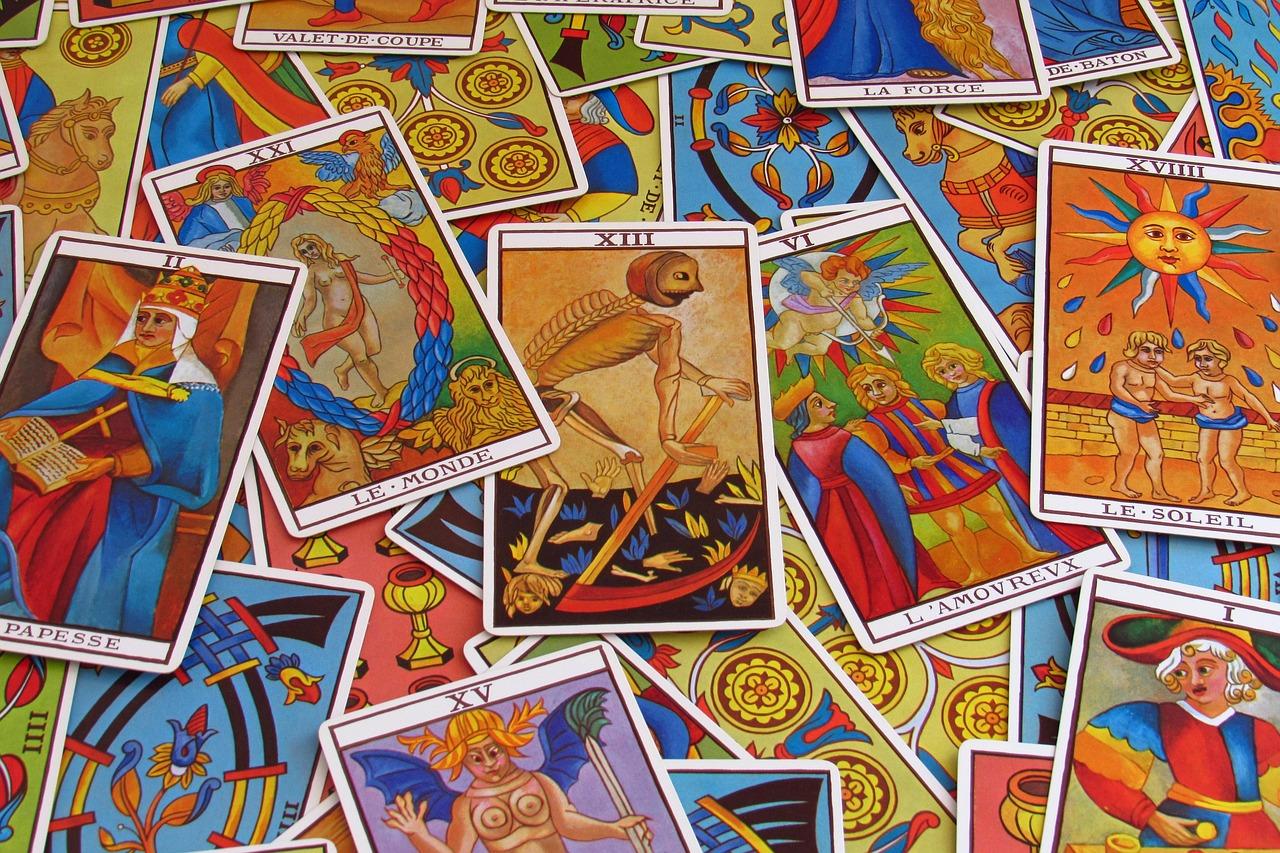
Understanding the Basics of Tarot Cards
Before diving into the art of tarot reading, it’s essential to grasp the fundamentals of tarot cards. At their core, tarot cards are a powerful tool for introspection and self-discovery. Each card holds its unique symbolism and meaning, allowing readers to interpret the messages they convey.
In a typical tarot deck, you will find 78 cards divided into two main categories: the Major Arcana and the Minor Arcana. The Major Arcana consists of 22 cards that represent significant life events and spiritual lessons, while the Minor Arcana includes 56 cards that delve into the everyday aspects of life.
Here’s a brief overview of the key components of tarot cards:
- Major Arcana: These cards symbolize major life themes and spiritual lessons. Examples include The Fool, The Lovers, and The World.
- Minor Arcana: These cards are divided into four suits (Cups, Wands, Swords, and Pentacles) representing different aspects of daily life.
- Suits: Each suit has its own focus: Cups relate to emotions, Wands to creativity and action, Swords to intellect and conflict, and Pentacles to material aspects and finances.
- Numbers: Cards are numbered 1 through 10, with each number carrying its unique significance, while the court cards (Page, Knight, Queen, King) reflect personalities and roles.
Understanding the imagery and symbolism of each card is crucial for effective reading. For example, the The Tower symbolizes sudden change and upheaval, while The Star represents hope and inspiration. Familiarizing yourself with these meanings enhances your intuitive interpretation and connection with the cards.
When starting out as a tarot reader, consider keeping a tarot journal where you can document your readings and personal interpretations of each card. This practice not only helps in memorizing meanings but also fosters a deeper understanding of how the cards resonate with your life experiences. Over time, your interpretations will evolve, reflecting your unique perspective.
Additionally, many practitioners find value in learning about the different tarot spreads. A spread is the layout of cards during a reading, which can vary based on the question being asked. Popular spreads include:
| Spread Name | Description |
|---|---|
| Three-Card Spread | Explores past, present, and future. |
| Celtic Cross | Offers a comprehensive look at various influences on a situation. |
| Single Card Pull | Great for quick insights or daily guidance. |
Embrace the journey of learning tarot as a personal exploration rather than a rigid set of rules. The essence of tarot lies in its ability to spark intuition, encourage reflection, and reveal hidden truths. As you delve deeper into the meanings and layers of the cards, you will find your own unique voice as a tarot reader.
Choosing the Right Tarot Deck for You
When it comes to delving into the world of tarot, one of the most important decisions you’ll make is selecting the deck that resonates with you. With countless options available, from traditional Rider-Waite to contemporary artistic interpretations, finding the right tarot deck can feel daunting. Here are a few key factors to consider that will help you choose a deck that feels like an extension of yourself.
Personal Connection: Your tarot deck should evoke a sense of connection and comfort. Spend time looking at different decks, whether online or in a local shop. Pay attention to:
- Imagery that speaks to you
- Colors and themes that resonate
- Overall artistic style that draws you in
Trust your intuition; the right deck will feel like an old friend.
Artwork and Symbolism: Each tarot deck carries its unique artistic style and symbolism. Some decks use classic imagery, while others might incorporate modern design or cultural influences. Consider what type of symbolism you feel most comfortable with:
- Traditional symbolism (like Rider-Waite)
- Modern interpretations (like the Wild Unknown)
- Cultural themes (like the Tarot of the Divine)
Your choice should complement your personal beliefs and understanding of the tarot.
Guidance and Companion Books: Some decks come with comprehensive guidebooks that offer detailed explanations of each card and provide insightful interpretations. If you’re a beginner, choosing a deck with a supportive guide can enhance your learning process. Look for:
- Decks with clear, understandable literature
- Books that include spreads and practical advice
- Online resources or communities related to the deck
These resources can be invaluable as you begin your tarot journey.
Deck Size and Quality: The physical aspects of your tarot deck matter too. Consider the card size, thickness, and general quality. A deck that feels good in your hands will enhance your readings. Take into account:
- Card dimensions (easier to shuffle may be better for beginners)
- Material and finish (durable cards can withstand frequent use)
- Packaging that protects your deck
Finding a deck that feels right can make all the difference in your practice.
Community and Reviews: Before making your decision, it can be helpful to seek recommendations and reviews from other tarot enthusiasts. Online forums and social media platforms are great places to:
- Ask for feedback on specific decks
- Share experiences with different styles
- Find decks that others find helpful for beginners
This community input can provide insights you may not have considered and help you make a more informed choice.
| Deck Type | Best For | Notable Features |
|---|---|---|
| Rider-Waite | Beginners | Classic imagery and symbolism |
| Wild Unknown | Artistic seekers | Modern design, animal imagery |
| Tarot of the Divine | Culturally inspired readers | Rich illustrations from various myths |
Taking the time to choose a tarot deck that truly resonates with you can set the stage for a fulfilling tarot reading experience. Remember, there’s no right or wrong choice; the best deck is the one that speaks to your heart and guides you on your journey into the mystical world of tarot.
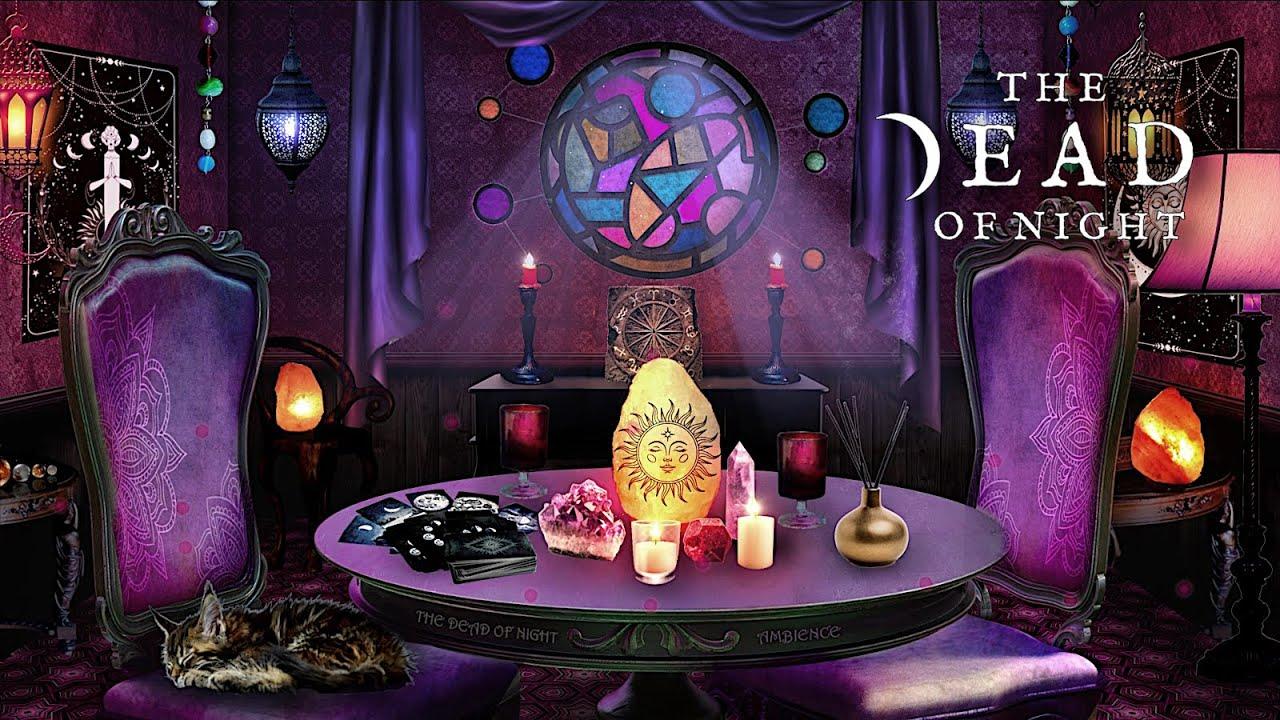
Creating Your Personal Tarot Reading Space
Creating a personal space for your tarot readings can enhance your connection to the cards and deepen your intuitive insights. It’s not just about having a table and a deck; it’s about crafting an environment that resonates with your energy and intentions.
Start by choosing a dedicated area in your home where you can practice without distractions. This could be a cozy corner of your living room, a serene nook in your bedroom, or even a spot in your garden. Here are some elements to consider for your sacred space:
- Comfort: Ensure you have a comfortable chair or cushion to sit on. You want to be at ease during your readings.
- Lighting: Use soft lighting or candles to set a calming atmosphere. Natural light is also wonderful if you can position your space near a window.
- Decor: Surround yourself with items that inspire you—crystals, incense, or artwork that speaks to your intuition.
- Table: A small table or surface is ideal for laying out your cards. Make sure it’s stable and at a comfortable height.
Once you have the physical setup, infuse your space with personal touches. Perhaps you love the scent of lavender or sandalwood; burning essential oils or incense can elevate the ambiance significantly. Incorporate items that resonate with your energy, such as:
- Crystals: Clear quartz for clarity, amethyst for intuition, or rose quartz for self-love.
- Artwork: Visual representations of your spiritual journey or tarot imagery that inspires you.
- Journals: Keep a dedicated journal nearby for notes on your readings and insights.
Another essential aspect is to ensure your space feels energetically clear. You might want to perform a cleansing ritual before each reading. Here are some simple methods:
- Sage or Palo Santo: Light it and let the smoke purify your space.
- Sound: Use a bell, singing bowl, or even your voice to raise the vibrations.
- Visualization: Imagine a white light surrounding your space, protecting it and enhancing its energy.
Once you’ve set up your space, take a moment to connect with it. Sit quietly, breathe deeply, and visualize the energy flowing through you and into your environment. This connection will help you establish a sacred bond with your cards and your practice.
Lastly, don’t forget to keep your space organized and tidy. A clutter-free environment promotes clarity of thought and a more profound connection to your intuition. You might even consider creating a simple chart to maintain your space:
| Task | Frequency |
|---|---|
| Dusting and cleaning | Weekly |
| Change incense or candle scents | Monthly |
| Recharge crystals | Monthly |
With your personal tarot reading space established, you’re ready to embark on your tarot journey. Your unique environment will serve as a powerful tool for introspection and guidance, allowing you to explore the depths of your intuition. Enjoy the process, and let your space evolve as you do!
Learning the Meaning of Each Card
As you embark on your journey to becoming a proficient Tarot card reader, understanding the meaning of each card is paramount. Each card in the Tarot deck carries its unique symbolism, representing different aspects of life, emotions, and experiences. To truly connect with the cards and interpret them effectively, it’s essential to dive deep into their individual meanings.
Start by familiarizing yourself with the Major Arcana, which consists of 22 cards that represent significant life themes and spiritual lessons. These cards often signify profound changes or pivotal moments. Here’s a quick overview of some key cards:
| Card | Meaning |
|---|---|
| The Fool | New beginnings, adventure, spontaneity |
| The Empress | Nurturing, abundance, femininity |
| The Tower | Sudden upheaval, chaos, revelation |
| The World | Completion, fulfillment, harmony |
Next, immerse yourself in the Minor Arcana, which consists of 56 cards divided into four suits: Cups, Pentacles, Swords, and Wands. Each suit has its own thematic focus:
- Cups: Emotions, relationships, and connections.
- Pentacles: Material aspects, career, and physical well-being.
- Swords: Intellect, challenges, and conflict.
- Wands: Creativity, passion, and action.
For example, the Ace of Cups symbolizes new emotional experiences and love, while the Ten of Swords often signifies betrayal or endings. To enhance your understanding, consider journaling your personal interpretations of each card as you learn. This practice helps solidify your connection to their meanings.
It’s also beneficial to explore the reversed meanings of each card. A card that appears upside down can often suggest a blockage or an alternate interpretation of its upright meaning. For instance, while the Two of Wands upright can indicate planning and progress, its reversed position may signify delays or indecision.
Additionally, consider utilizing visual aids or Tarot reference books to solidify your knowledge. Flashcards can be a handy tool for memorization. Create flashcards for each card, including its image on one side and its meanings on the other. This way, you can quickly test your memory and reinforce your learning.
As you deepen your understanding of each card, remember that intuition plays a crucial role in Tarot reading. Each card’s meaning can vary based on context and the query at hand. Trust your instincts as you interpret the cards and allow your personal experiences to inform your readings.

Developing Your Intuition for Accurate Readings
Developing your intuition is a crucial step in becoming a proficient tarot card reader. Unlike mere memorization of card meanings, tapping into your inner voice allows you to provide more profound and personalized readings. Here are some effective strategies to help you hone this essential skill:
- Practice Mindfulness: Engage in mindfulness exercises to quiet your mind and enhance your awareness. Simple techniques like meditation or deep breathing can help you connect with your inner self.
- Keep a Tarot Journal: Document your readings and the feelings you experienced during each session. This practice can reveal patterns and deepen your understanding of the cards.
- Trust Your First Impressions: When you draw a card, allow your initial thoughts and feelings to guide your interpretation. Overthinking can cloud your intuition, so embrace spontaneity.
- Engage in Symbolism: Spend time analyzing the symbols present in each card. Understanding these symbols can help your intuition decipher messages beyond traditional meanings.
- Connect with Your Deck: Form a bond with your tarot deck by spending time with it. Shuffle, meditate, or even sleep with the deck under your pillow to enhance your intuitive connection.
As you work on these techniques, consider incorporating the following practices into your routine:
| Practice | Description | Benefits |
|---|---|---|
| Daily Pull | Draw one card each morning to set your intention for the day. | Enhances daily awareness and intuition. |
| Group Readings | Practice reading for friends or family to gain new perspectives. | Builds confidence and improves interpretation skills. |
| Visualization Exercises | Imagine scenarios related to the cards to enrich your intuitive understanding. | Enhances creative thinking and intuition. |
Listening to your intuition is about honing your ability to feel and interpret energy. Over time, you’ll find that your instincts lead you to more accurate readings. Don’t be afraid to explore different styles of reading, such as intuitive or psychic tarot, which can further enhance your natural abilities.
Collaborate with fellow tarot enthusiasts, attend workshops, or join online communities where you can share insights and experiences. Engaging with others allows for the exchange of ideas and can spark your creativity, reinforcing your intuitive skills.
Remember, developing your intuition is a journey that requires patience and practice. Each reading is a unique opportunity to connect deeply with both the cards and the person you’re reading for. Embrace the process, and trust that your intuition will guide you toward greater accuracy and insight.
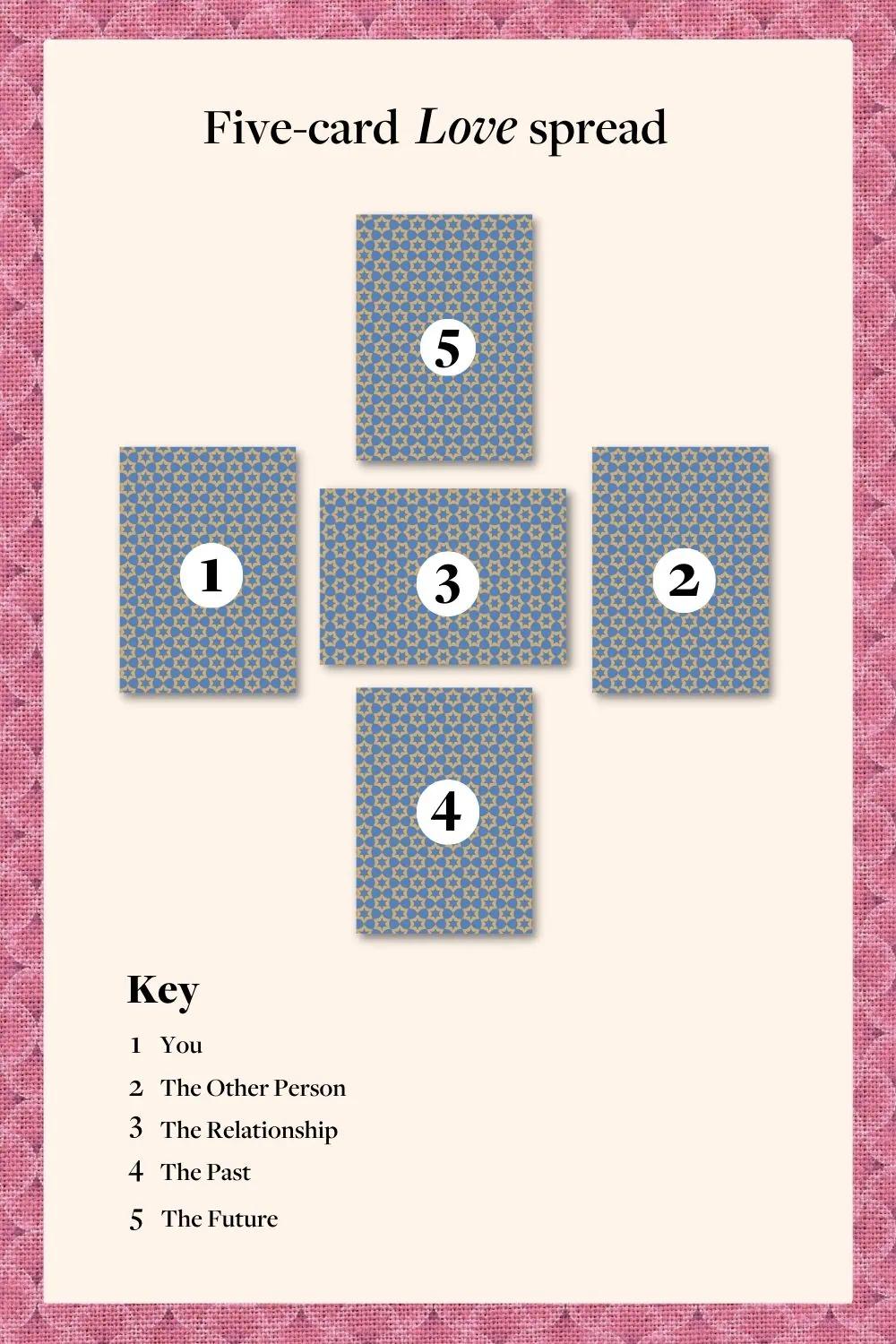
Practicing Tarot Spreads for Beginners
As you embark on your tarot journey, practicing different spreads can significantly enhance your reading experience. Tarot spreads are simply layouts that dictate how the cards are placed and interpreted. For beginners, starting with a few simple spreads can be a fantastic way to familiarize yourself with the meanings of the cards and how they connect with one another.
Here are some popular spreads to get you started:
- One-Card Spread: A straightforward way to get quick insights or answers. Simply draw one card and reflect on its meaning.
- Three-Card Spread: This versatile spread can represent the past, present, and future or focus on specific questions. Draw three cards and interpret their individual meanings as well as how they interact.
- Five-Card Spread: This spread allows for more depth and detail. Each card can represent different aspects, such as the situation, challenges, advice, and outcomes.
When practicing these spreads, consider the following tips:
- Create a Sacred Space: Find a quiet spot where you feel comfortable and free from distractions. Light a candle or burn some incense to enhance the atmosphere.
- Set Your Intention: Before drawing cards, take a moment to meditate on a question or intention. This focus will guide your interpretation.
- Take Notes: Keep a tarot journal to document your readings. Write down the cards drawn, your interpretations, and any thoughts or feelings that arise. This practice will help you track your progress and refine your understanding.
As you progress, experiment with more complex spreads. Consider trying a Celtic Cross Spread, which offers a comprehensive view of a situation, or the Relationship Spread, which helps explore dynamics between two people. You can also create your own unique spreads catered to specific questions or themes that resonate with you.
| Spread | Purpose | Card Positions |
|---|---|---|
| One-Card Spread | Quick insights | 1 |
| Three-Card Spread | Past, Present, Future | 3 |
| Five-Card Spread | Detailed perspective | 5 |
| Celtic Cross | Comprehensive overview | 10 |
| Relationship Spread | Explore dynamics | 4 |
Ultimately, practicing these spreads will not only sharpen your tarot skills but also deepen your intuition and connection to the cards. Embrace the journey, remain open to learning, and remember—there’s no right or wrong in tarot. Trust your instincts and enjoy each reading as a unique experience.
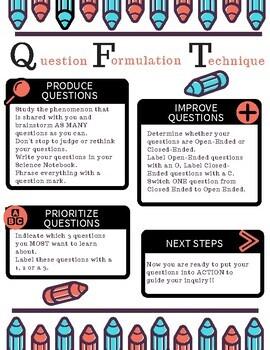
Mastering the Art of Question Formulation
One of the most crucial skills a tarot card reader can develop is the ability to formulate effective questions. The clarity and intention behind your questions can significantly impact the readings, not just for yourself but for the clients you’ll serve. Here’s how to hone that skill:
Define Your Intentions: Before diving into a reading, take a moment to reflect on what you’re hoping to discover. Whether seeking guidance on a particular issue or looking for broader insights, defining your intentions will help in crafting focused questions. Ask yourself:
- What specific area of my life am I seeking clarity on?
- What outcome do I hope to achieve with this reading?
- Am I open to unexpected insights, or do I have a fixed agenda?
Keep Questions Open-Ended: Effective tarot questions should encourage exploration rather than yes-or-no answers. Open-ended questions invite deeper understanding and allow the cards to reveal more nuanced perspectives. For instance, instead of asking, “Will I get the job?”, consider reframing it to “What can I do to strengthen my chances of getting the job?” This not only engages the cards more fully but also empowers you as a seeker.
Be Specific: While it’s important to keep questions open, specificity is equally vital. Vague questions can lead to vague answers. Instead of asking, “What about my future?”, specify the timeframe or context, like “What opportunities may arise in my career over the next six months?” This approach provides clearer guidance and helps you draw more relevant insights from the cards.
Incorporate Emotions: Emotions are a powerful part of tarot. When you frame your questions, consider including emotional aspects. For example, rather than simply asking, “What will happen in my relationship?”, you could ask, “How can I nurture deeper emotional connections in my relationship?” This not only deepens the reading but also fosters personal growth and introspection.
Practice Makes Perfect: Like any skill, formulating questions improves with practice. Set aside time each week to reflect on different areas of your life and write down potential questions. You might even consider journaling your readings and the questions that led to them. This will help in identifying which types of questions yield the most insightful responses.
Seek Feedback: Once you start practicing with others, don’t hesitate to ask for feedback on your questioning techniques. Constructive criticism can help you refine your approach and discover new ways to engage with the cards. Consider joining a local tarot group or an online community where you can share experiences and learn from fellow enthusiasts.
Ultimately, will enrich your tarot reading experience and empower you and those you read for. Approach each session with curiosity and intention, allowing the cards to guide you toward deeper insights.

Building Confidence in Your Reading Skills
One of the most important aspects of becoming a tarot card reader is developing confidence in your reading skills. This confidence will not only enhance your interpretations but also create a more engaging experience for your clients. Here are some effective strategies to help you build that confidence:
- Practice Regularly: The more you practice, the more comfortable you’ll become with the cards. Consider setting aside time each day to perform readings for yourself or close friends.
- Keep a Tarot Journal: Documenting your readings helps you track your progress and reflect on your interpretations. Over time, you’ll see your growth and build trust in your abilities.
- Join a Community: Engaging with other tarot enthusiasts can provide support, feedback, and encouragement. Look for local groups or online forums where you can share insights and ask questions.
- Study the Meanings: Deepen your understanding of the cards by studying their traditional meanings as well as your personal interpretations. This knowledge will give you a solid foundation to draw upon during readings.
- Trust Your Intuition: Remember that tarot reading is as much about intuition as it is about the cards themselves. Allow yourself to trust your gut feelings during readings—they’re just as important as the card meanings!
As you progress, you may encounter self-doubt. It’s crucial to acknowledge this feeling, but don’t let it hinder your journey. Instead, use it as a catalyst for growth. Consider the following techniques:
| Technique | Description |
|---|---|
| Visualization | Imagine yourself giving an amazing reading. Picture the positive reactions of your clients, and let that boost your confidence. |
| Positive Affirmations | Write down affirmations related to your tarot abilities and repeat them daily. Affirmations like “I am a skilled tarot reader” can reshape your mindset. |
| Small Wins | Celebrate your successes, no matter how small. Each reading you complete is a step towards becoming a more confident reader. |
Lastly, remember that even seasoned readers sometimes feel uncertain. Confidence in reading comes with experience and reflection. Allow yourself to grow at your own pace, and don’t be afraid to make mistakes. Every misstep is a learning opportunity that will ultimately refine your skills.
By engaging in consistent practice, connecting with others, and nurturing your intuition, you’ll find that your confidence in your reading skills will blossom. Embrace the journey and trust that every card you pull and every reading you conduct brings you closer to mastering this mystical art.
Connecting with Your Clients on a Deeper Level
Building a meaningful relationship with your clients is essential in the world of tarot reading. It’s not just about interpreting cards but connecting with the unique energies and emotions that each individual brings to the table. Here’s how you can deepen that connection:
- Active Listening: Pay close attention to your clients’ words and emotions. Often, what they say is just as important as the cards themselves. Acknowledge their feelings and validate their experiences, which will make them feel heard and understood.
- Empathy is Key: Approach each reading with empathy. Put yourself in their shoes and try to understand their perspective. This will allow you to provide insights that resonate on a personal level.
- Create a Safe Space: Ensure your reading environment is comfortable and inviting. A calming atmosphere can help clients open up and share their true concerns. Consider using soft lighting, soothing music, or even aromatherapy to enhance the experience.
- Personalize Your Approach: Each client is unique. Tailor your readings to their specific needs and questions. This personalized attention shows them that you care and are invested in their journey.
To further enhance your connection, consider gathering some background information before a session. This can include:
| Information | Purpose |
|---|---|
| Client’s Name | Personalize the reading by addressing them directly. |
| Previous Experiences with Tarot | Understand their perspective and level of comfort. |
| Specific Questions or Concerns | Focus the reading on what matters most to them. |
| Preferred Style of Reading | Adapt your approach to their comfort and understanding. |
Another effective way to connect is through storytelling. Share your own experiences or those of others (with permission, of course) to illustrate points during the reading. This not only makes the session more relatable but also shows your human side, fostering an emotional bond.
Lastly, follow up after the reading. Sending a quick message or email expressing gratitude for their session can leave a lasting impression. Consider offering a brief recap of insights or tips for moving forward based on the reading. This shows that you value their journey beyond the tarot table.
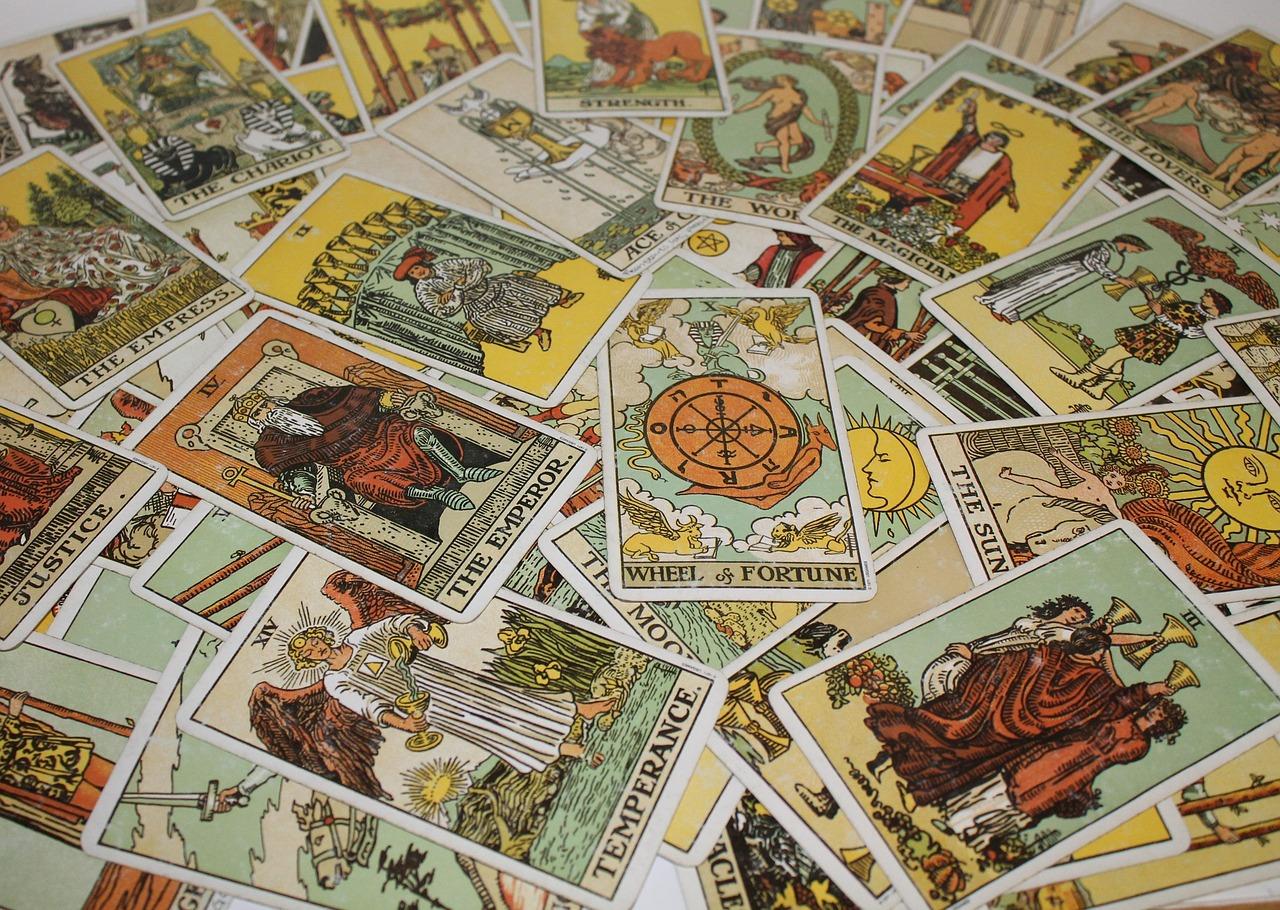
Navigating Ethical Considerations in Tarot Reading
Ethics in tarot reading is a crucial aspect that every aspiring reader should navigate with care. The practice of tarot is not just about divination; it’s a deep, intuitive art that requires a responsible approach to handling clients’ emotions and questions. Being ethical means recognizing the profound impact your readings can have and ensuring you provide a safe space for those seeking guidance.
First and foremost, it’s essential to prioritize client confidentiality. This means that anything shared during a reading should stay between you and the querent. Establishing trust is pivotal, and respecting privacy encourages clients to open up more about their concerns. You might consider creating a policy that outlines your commitment to confidentiality, which can further reassure clients.
Another vital consideration is to avoid giving medical, legal, or financial advice. Tarot is a tool for insight and reflection, not a replacement for professional counsel. Always clarify your role as a tarot reader and the limitations of your guidance. You might say something like, “While I can provide insights, please consult a professional for any serious matters regarding health, law, or finances.” This not only sets boundaries but also protects you and your clients.
When conducting a reading, be mindful of the language you use. Words have power, and the way you phrase your interpretations can significantly affect a client’s emotional state. Aim to communicate your insights positively and constructively, focusing on potential outcomes rather than fixed predictions. Here are some phrases to consider avoiding:
- “You will fail at…”
- “I see disaster coming…”
- “This will definitely happen…”
Instead, try to frame your insights in a way that empowers your clients. For example, you could say: “This situation may present challenges, but it also opens doors for new opportunities.” This not only fosters hope but also encourages proactive steps towards making positive changes.
It’s also essential to recognize the emotional state of your clients. Some may come to you in distress or uncertainty. Thus, practicing empathy during readings can make a significant difference. Always be observant of your client’s reactions and ready to offer support. If someone seems overwhelmed, consider pausing the reading to check in with how they feel and whether they need a moment to process.
consider your own personal biases and how they may influence your readings. Regular self-reflection and awareness of your perspectives can help you provide more balanced insights. Strive to keep your interpretations objective and focus on what the cards signify for your client’s journey rather than your own beliefs. This practice enhances your credibility and helps in delivering more genuine readings.
navigating the ethical considerations in tarot reading involves a blend of respect, clarity, and empathy. By establishing firm ethical standards, you not only enhance your practice but also build meaningful connections with those who seek your guidance.
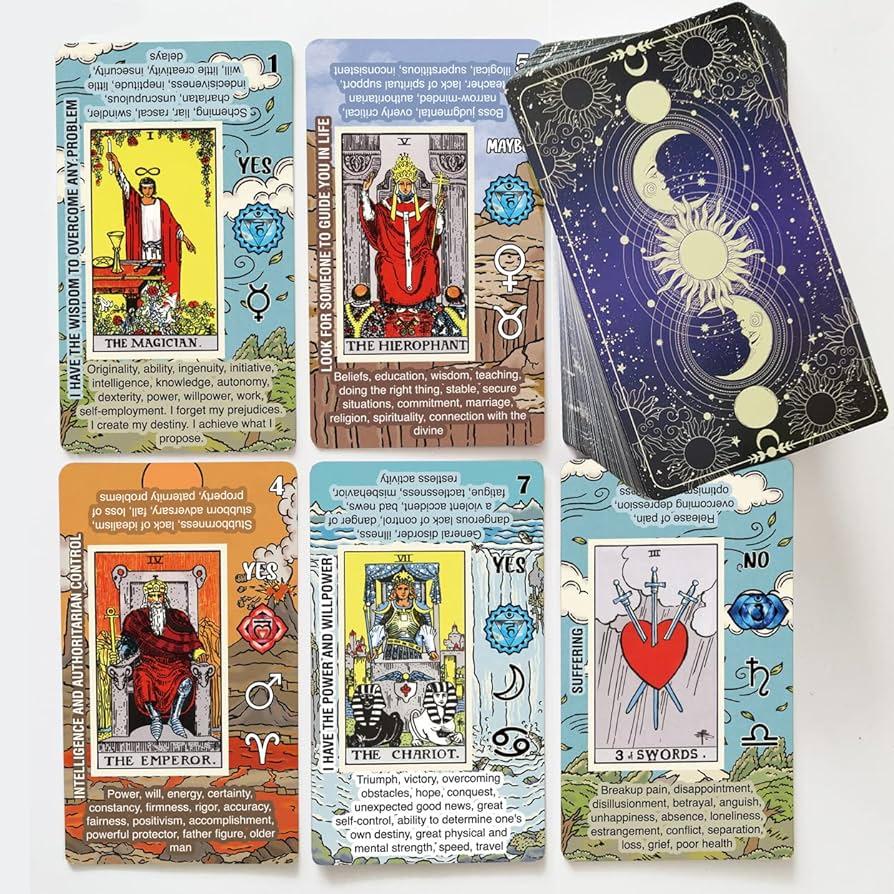
Continuing Your Tarot Education and Growth
Once you’ve grasped the basics of tarot reading, the journey doesn’t end there. In fact, it’s just the beginning. To truly excel as a tarot card reader, you must embrace lifelong learning and exploration. Here are some effective ways to enhance your tarot skills and deepen your understanding of the cards.
- Read Books and Articles: Delve deeper into tarot literature. Authors like Rachel Pollack and Mary K. Greer offer profound insights and advanced techniques that can refine your reading skills.
- Join Tarot Communities: Engage with other tarot enthusiasts through online forums or local meetups. Platforms like Reddit, Facebook groups, or even your local metaphysical store can connect you with like-minded individuals.
- Practice Regularly: Consistent practice is key. Set aside time each week to read for yourself or friends. The more readings you conduct, the more intuitive you’ll become.
- Keep a Tarot Journal: Document your readings, insights, and interpretations. Reflecting on your experiences will help track your progress and offer new perspectives as you develop your style.
- Tackle Different Decks: Experiment with various tarot decks. Each deck carries its own energy and interpretation style. Finding one that resonates with you can enhance your readings significantly.
Another valuable resource is online courses. Numerous platforms offer structured courses that range from beginner to advanced levels. These courses often include video content, community discussions, and assignments to hone your skills further.
Networking with Other Readers: Attend workshops, webinars, or tarot conventions. Meeting established readers and participating in discussions can provide invaluable insights and new techniques. Additionally, consider offering free readings to friends or at community events to gain experience while helping others.
For an even more immersive experience, consider learning related practices such as astrology, numerology, or even crystal healing. These complementary disciplines can enrich your tarot readings and provide deeper layers of understanding.
don’t forget to trust your intuition. The cards may provide guidance, but your personal insights and feelings can lead to the most powerful interpretations. Embrace your unique style and continue exploring the vast world of tarot as your journey unfolds.
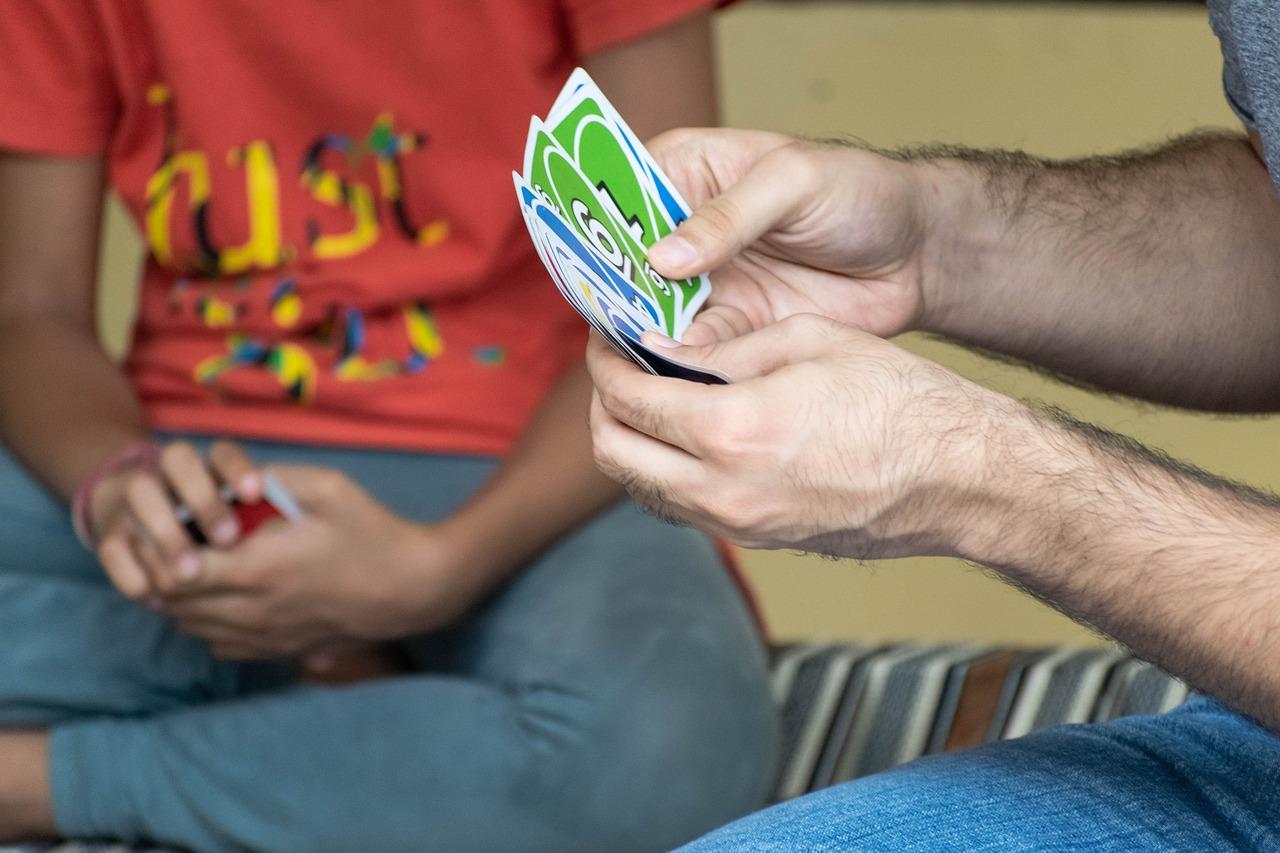
Joining the Tarot Community for Support and Inspiration
As you embark on your journey to becoming a tarot card reader, one of the most beneficial steps you can take is to connect with the vibrant tarot community. This space offers a wealth of support and inspiration that can greatly enhance your learning experience. Engaging with others who share your passion can help you deepen your understanding of tarot and gain new insights into your practice.
Joining online forums or social media groups dedicated to tarot can open up a world of interaction. Here are some fantastic ways to immerse yourself in the community:
- Participate in discussions: Share your thoughts and experiences with others, and learn from their journeys.
- Attend workshops and webinars: These events often feature experienced readers and can provide valuable knowledge that you won’t find in books.
- Follow tarot blogs and podcasts: These resources can offer fresh perspectives and keep you updated on the latest trends and techniques in tarot reading.
Finding a mentor within the community can also be incredibly beneficial. A mentor can provide guidance tailored to your needs, help you navigate challenges, and give constructive feedback on your readings. Here’s how you can seek out mentorship:
- Reach out to experienced readers: Don’t hesitate to ask for advice or guidance from those who inspire you.
- Join local meetups: Connecting with readers in your area can lead to valuable friendships and mentorship opportunities.
Another great way to engage with the tarot community is to participate in tarot swaps or readings. These activities allow you to practice your skills and receive feedback in a supportive environment. Plus, they can introduce you to new decks and reading styles, expanding your horizons.
If you’re looking for even more structured support, consider joining a tarot study group. These groups often meet regularly, allowing members to share readings, explore different tarot spreads, and discuss card meanings in-depth. Here’s what you can expect:
| Study Group Benefits |
|---|
| Regular practice: Consistent reading helps build confidence and skill. |
| Diverse perspectives: Learning from others’ interpretations can enhance your understanding. |
| Accountability: Being part of a group encourages you to stay committed to your practice. |
Remember, the tarot community is filled with individuals at all stages of their journey. Embrace the diversity and learn from everyone you meet. As you grow, don’t hesitate to give back to the community by sharing your insights and experiences, as this is what keeps the energy vibrant and supportive.
Ultimately, being part of the tarot community can enrich your reading practice, provide emotional support, and inspire you to explore new avenues in your journey. So, take that first step and dive in—you’ll find a treasure trove of resources, friendships, and connections waiting for you!
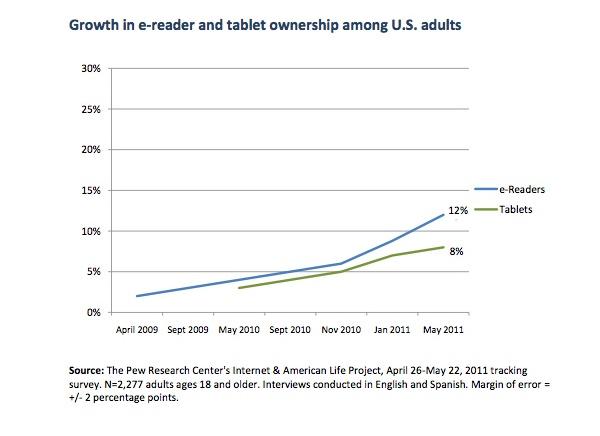
Embracing the Journey: Your Growth as a Reader
As you dive into the world of tarot, remember that every card you shuffle, every spread you lay out, is a step on a path uniquely your own. The journey of becoming a tarot card reader isn’t solely about mastering the meanings of the cards; it’s also about exploring your intuition, honing your skills, and embracing the insights you gain along the way.
Reflect on Your Experiences
Each reading you conduct—whether for yourself or others—offers valuable lessons. Take time to reflect on your experiences. Ask yourself:
- What insights did you gain from this reading?
- How did the cards relate to the questions asked?
- What did your intuition tell you during the reading?
By keeping a tarot journal, you can track your growth and observe patterns in your readings over time. This practice not only sharpens your skills but also deepens your understanding of the cards.
Engage with the Community
Find your tribe! Engaging with fellow tarot enthusiasts can enhance your journey exponentially. Join online forums, attend workshops, or participate in local meet-ups. Sharing your experiences and learning from others helps you to:
- Gain new perspectives on card interpretations.
- Discover different reading styles.
- Build confidence in your abilities.
Connecting with other readers also opens doors to potential mentorship opportunities, where you can learn from those who have been on this path longer than you.
Practice Regularly
Mastery comes with practice. Set aside dedicated time each week to read for yourself or friends. Consider the following strategies to enhance your practice:
| Practice Method | Description |
|---|---|
| Daily Card Pull | Draw one card each day and reflect on its meaning in your life. |
| Weekly Spreads | Conduct a more complex reading each week to address specific questions. |
| Group Readings | Host a reading session with friends to gain feedback and share insights. |
Trust Your Intuition
While studying card meanings is crucial, the true magic of tarot lies in your intuition. As you become more comfortable, allow your instincts to guide you. Pay attention to:
- The emotions that arise while reading.
- Your immediate thoughts when you see certain cards.
- How the cards interact with one another in a spread.
Remember, there’s no right or wrong way to interpret the cards. Trusting your gut can lead to powerful insights that resonate deeply with you and those you read for.
Celebrate Your Progress
Every step you take, no matter how small, is worth celebrating. Acknowledge your growth, whether you’ve learned a new card meaning, conducted your first reading, or successfully interpreted a complex spread. Treat your journey as a lifelong learning experience, and don’t hesitate to indulge in the joy of tarot!
Frequently Asked Questions (FAQ)
Q&A: How to Become a Tarot Card Reader: Beginner’s Guide (7 Steps)
Q1: What is Tarot reading, and why should I consider becoming a reader?
A: Tarot reading is a fascinating practice that uses a deck of cards to gain insights into the past, present, and future. It’s not just about fortune-telling; it’s a powerful tool for self-reflection and personal growth. If you’re curious about spirituality, psychology, or simply want to help others navigate their lives, becoming a Tarot reader can be incredibly rewarding!
Q2: I’m a complete beginner. What’s the first step I should take?
A: Start by getting a Tarot deck that resonates with you. There are countless decks out there, each with unique artwork and symbolism. Spend some time exploring different decks — sometimes, it’s love at first sight! Once you find one that speaks to you, familiarize yourself with its imagery and meanings.
Q3: Do I need to memorize all the card meanings?
A: Not at all! While understanding the basics of each card is important, it’s more about developing your intuition and connection to the cards. Take your time to learn them gradually. Using a guidebook or online resources can help. And remember, your interpretations can evolve over time — it’s part of the process!
Q4: How do I practice my Tarot reading skills?
A: Practice, practice, practice! Start by doing readings for yourself to build confidence. Once you feel more comfortable, offer free readings to friends or family. Not only will this help you refine your skills, but it’s also a fantastic way to receive feedback and grow as a reader.
Q5: What if I feel nervous about giving readings?
A: Feeling nervous is completely normal, especially at the beginning. Consider starting with smaller readings or focusing on specific questions. Trust in your intuition and the cards. Remember, every great reader has been where you are now. Over time, with practice, your confidence will grow!
Q6: How do I create a sacred space for my readings?
A: Creating a comfortable and calming environment is key to effective Tarot reading. Find a quiet space where you won’t be disturbed. You might light a candle, play soft music, or surround yourself with crystals or other meaningful items. This helps set the mood and allows you to connect more deeply with the energy of the cards.
Q7: Can I read for others if I’m still a beginner?
A: Absolutely! In fact, reading for others can accelerate your learning process. Just be open about your experience level. Most people appreciate honesty and will value your insights, even if you’re just starting out. Plus, it’s a great way to build your confidence and develop a unique reading style.
Q8: How do I interpret the cards during a reading?
A: Start by looking at the imagery and symbols on the cards, then consider their traditional meanings. Your intuition plays a crucial role here. Ask yourself what the cards are trying to communicate in the context of the question being asked. The more you read, the more you’ll develop a personal interpretation style that works for you.
Q9: Is there a community for aspiring Tarot readers?
A: Yes! There are many online forums, social media groups, and local meet-ups where you can connect with fellow Tarot enthusiasts. Sharing experiences, asking questions, and exchanging tips can provide invaluable support on your journey to becoming a skilled Tarot reader.
Q10: What’s the most important piece of advice for someone starting out?
A: Be patient with yourself and enjoy the journey! Tarot reading is a lifelong learning process. Trust your intuition, stay curious, and remember that every reader has their own unique style. Enjoy the magic of the cards, and don’t forget to have fun along the way!
In Retrospect
And there you have it! You’re now equipped with the essential steps to embark on your journey as a tarot card reader. Remember, this isn’t just about interpreting cards; it’s about tapping into your intuition, connecting with others, and exploring the rich tapestry of human experience.
As you dive into this mystical world, don’t forget to practice regularly and trust your instincts. Every reading you conduct is an opportunity to learn and grow, not just for your clients, but for yourself too. So, whether you’re reading for friends, family, or eventually, clients, approach each session with an open heart and mind.
If you’re feeling a bit nervous, that’s completely normal! Every seasoned reader started where you are now. Embrace the learning curve and enjoy the process – the more you read, the more confident you’ll become. And who knows? You might just uncover insights that surprise you along the way.
So go on, grab your deck, and start shuffling! The world of tarot awaits, and with each card you draw, you’re not just telling a story; you’re helping others navigate their own. Happy reading!






